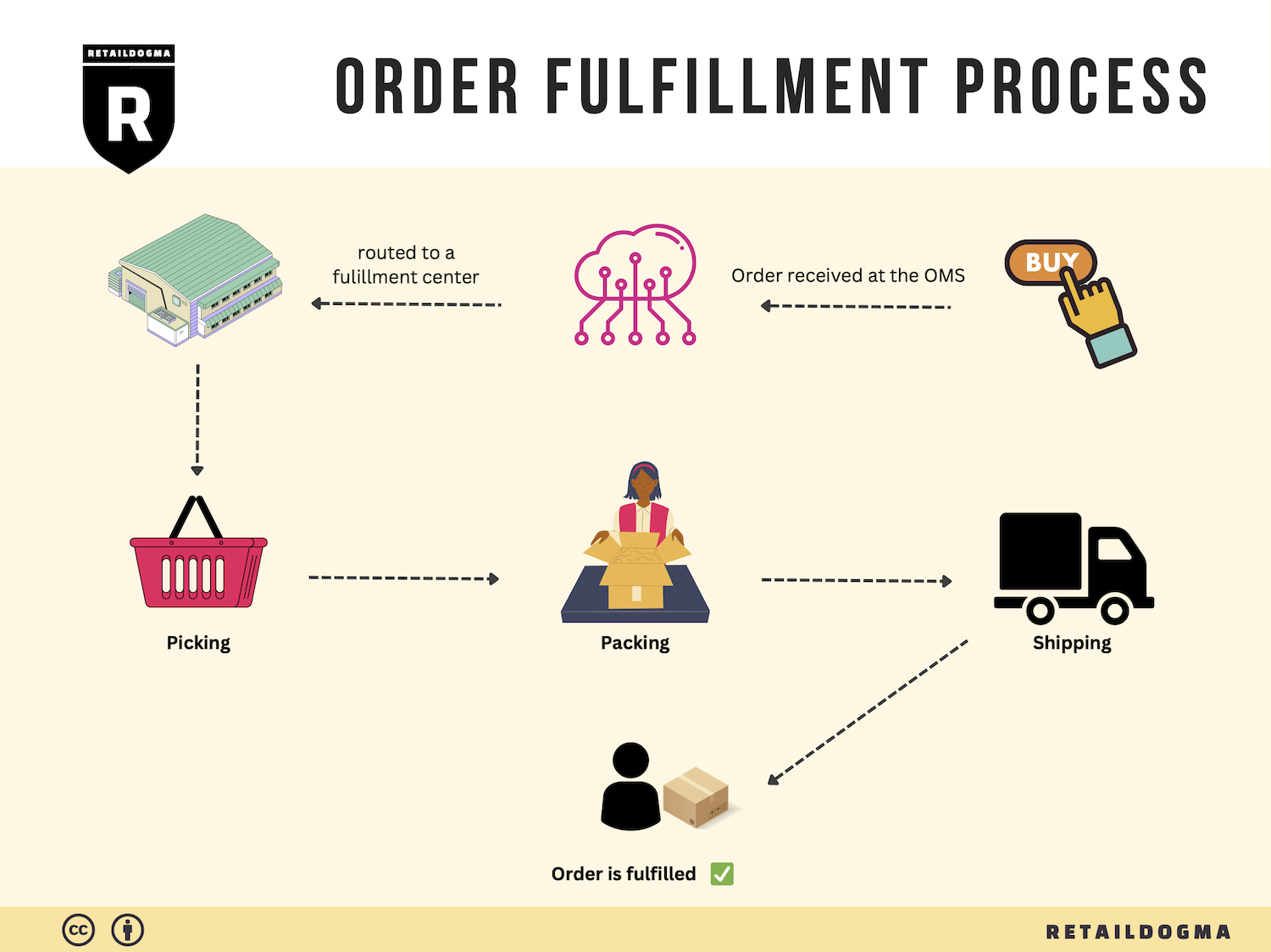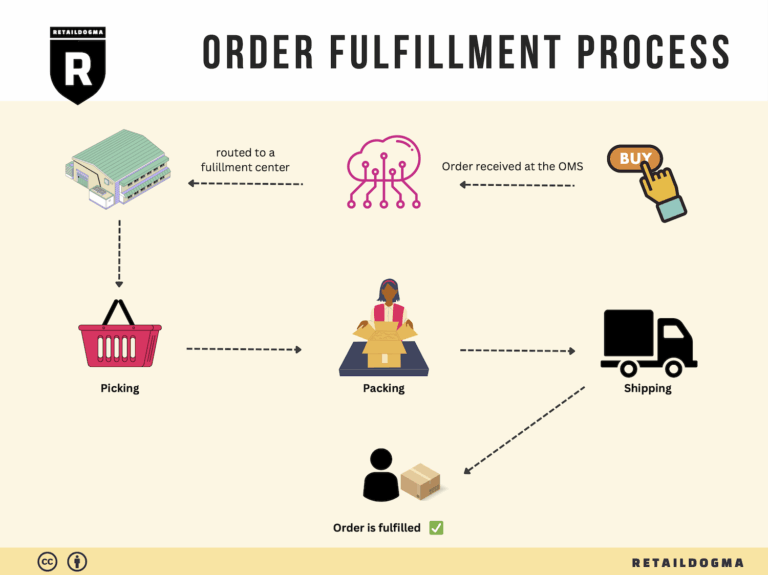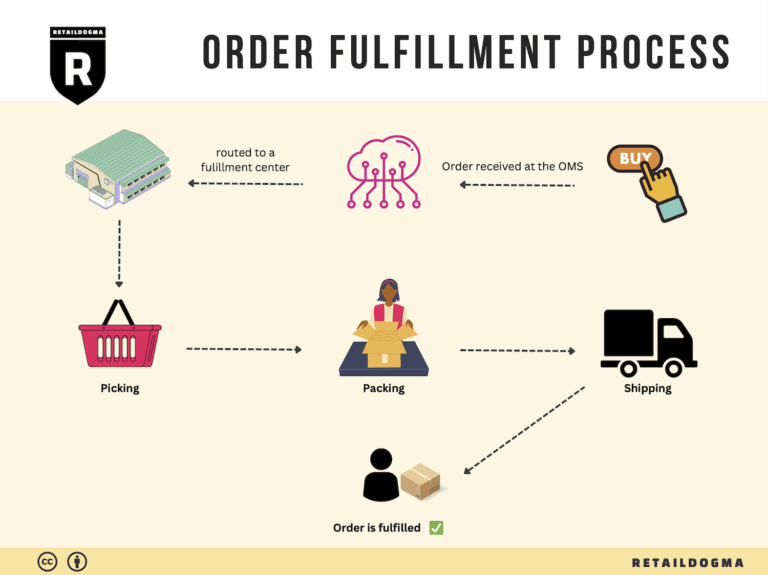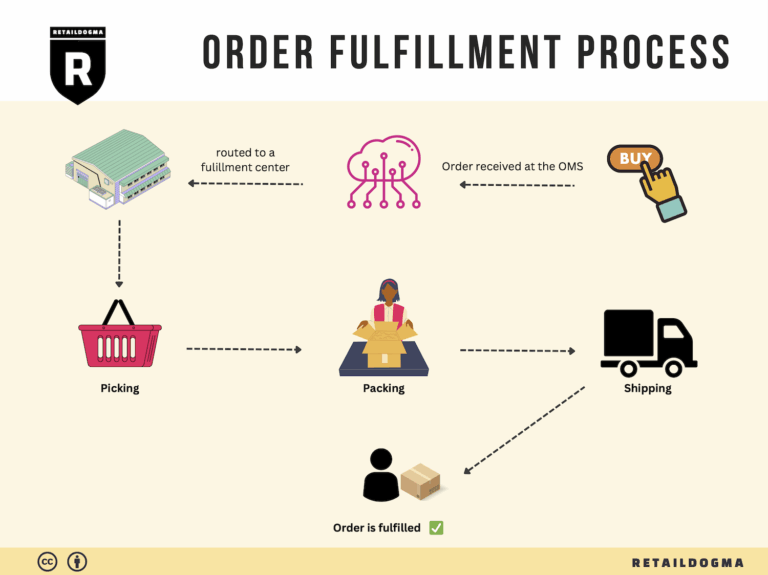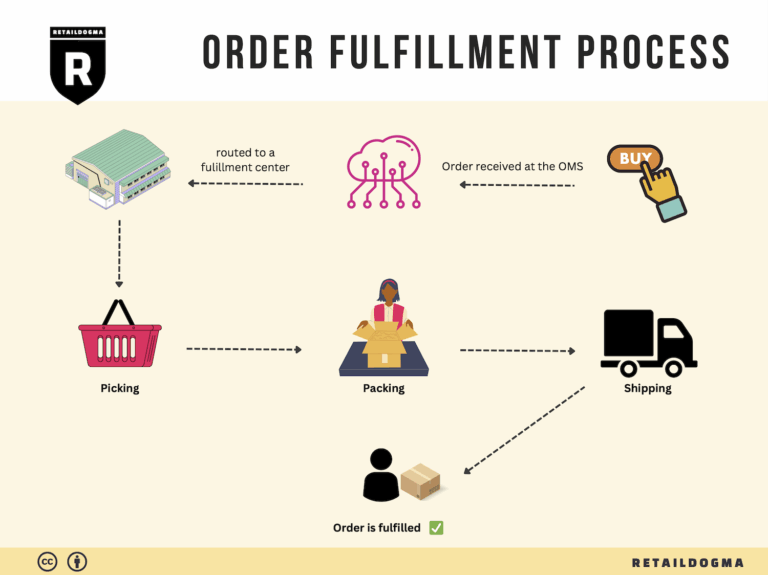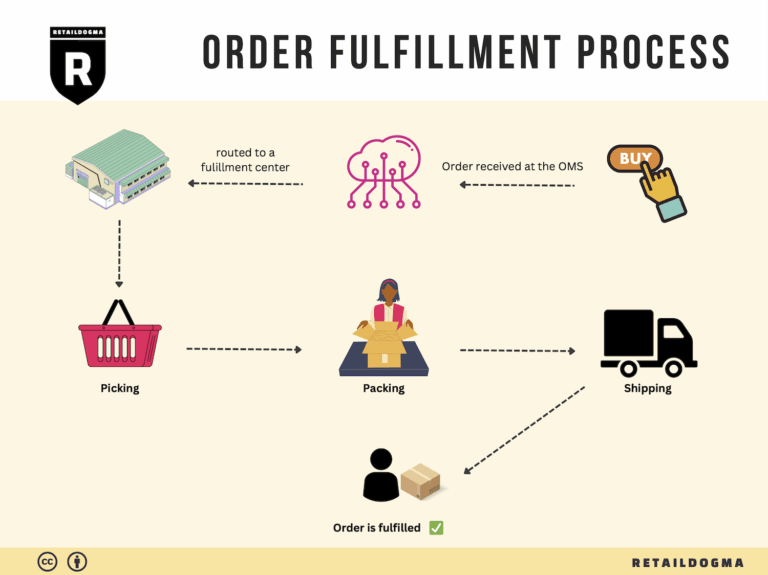How Order Fulfillment Works: A Step-by-Step Guide for Businesses
What is E-commerce Fulfillment? An Introduction for Growing Businesses
Understanding E-commerce Fulfillment for Growing Businesses
As an e-commerce business owner, the excitement of scaling your online sales can quickly turn into overwhelm when faced with the logistics of packing and shipping orders. Managing fulfillment can feel like an insurmountable challenge, especially when your focus should be on driving growth and enhancing customer satisfaction. Fulfillment is the process of getting your products from your warehouse or supplier to your customers, and it encompasses everything from inventory management to shipping logistics.
This guide aims to demystify e-commerce fulfillment and provide you with the tools necessary to navigate this critical component of your business successfully. We will explore various fulfillment models, including Third-Party Logistics (3PL) and Fulfillment by Amazon (FBA), helping you understand which option might be the best fit for your unique needs.
Key Areas Covered in This Guide
-
Fulfillment Models: We’ll delve into the different fulfillment models available, highlighting the pros and cons of each. You’ll learn about 3PL services, which handle warehousing and shipping on your behalf, and FBA, where Amazon takes care of storage, packing, and shipping, allowing you to leverage their vast logistics network.
-
Core Fulfillment Services: Discover the essential services offered by fulfillment partners, including inventory management, order processing, packing, shipping, and returns handling. Understanding these services will help you identify what you need from a fulfillment partner.
-
Choosing a Fulfillment Partner: Selecting the right fulfillment partner is crucial for your business’s efficiency and customer satisfaction. We’ll provide criteria to consider when evaluating potential partners, such as location, technology integration, scalability, and customer service.
-
Pricing Considerations: Fulfillment costs can vary widely depending on the model and services you choose. We’ll break down the pricing structures of different fulfillment options, including storage fees, shipping costs, and any additional charges, helping you budget effectively.
Empowering Your Logistics Decisions
The goal of this guide is to empower you, as a growing business, to make informed decisions about your logistics strategy. By understanding the intricacies of e-commerce fulfillment, you can streamline your operations, reduce costs, and enhance the overall customer experience. As you navigate the complexities of fulfillment, remember that the right strategies and partners can transform logistics from a pain point into a competitive advantage, allowing you to focus on what you do best—growing your business.
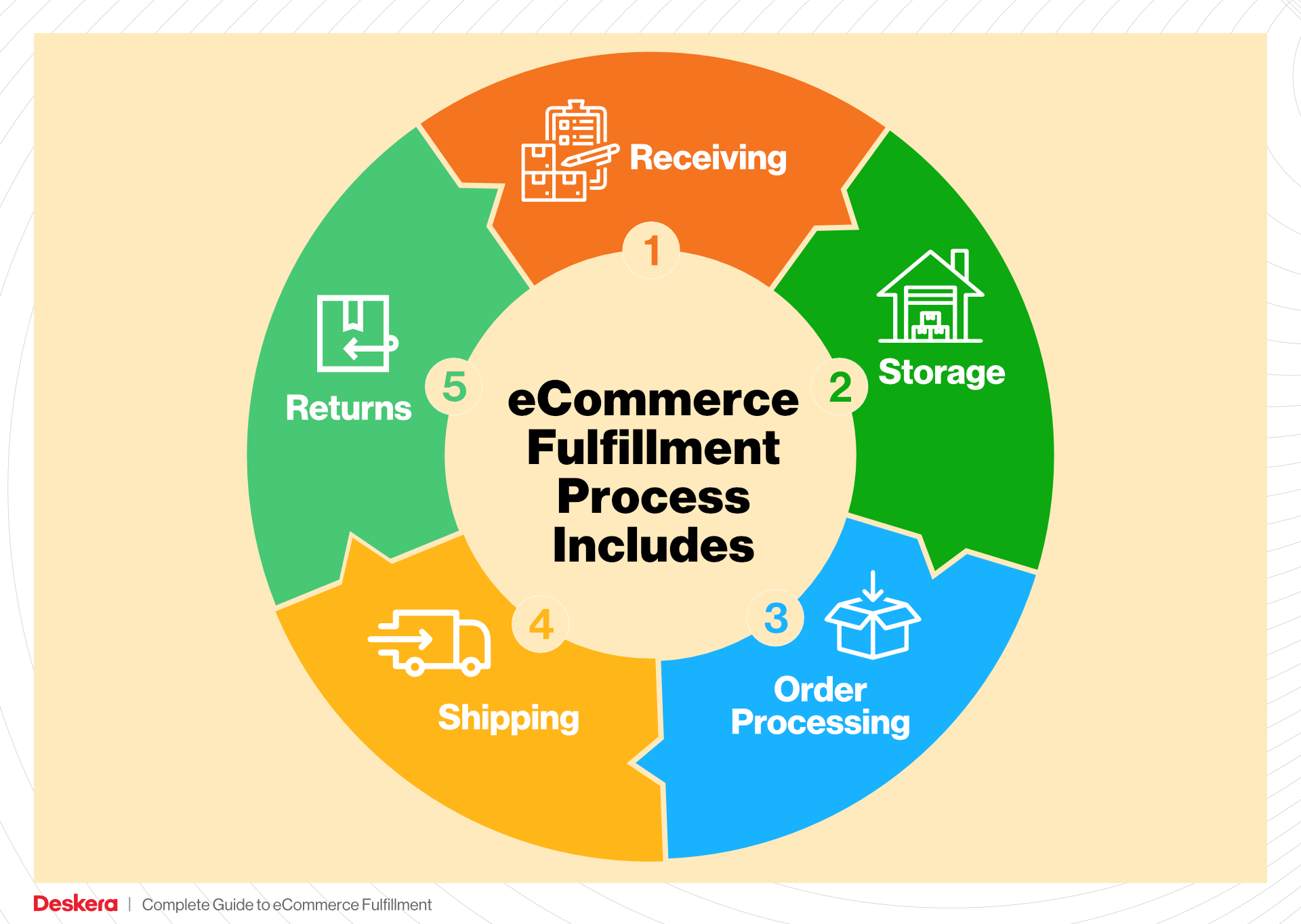
What You’ll Learn In This Guide
- What is E-commerce Fulfillment? An Introduction for Growing Businesses
- The Order Fulfillment Process: From ‘Buy’ Button to Customer’s Door
- Comparing Fulfillment Models: In-House vs. 3PL vs. Dropshipping
- A Deep Dive into Amazon FBA: Pros, Cons, and Who It’s For
- Core Services Offered by Fulfillment Centers
- How to Choose a Fulfillment Partner: A 6-Point Checklist
- Understanding Fulfillment Pricing: A Breakdown of Common Fees
- Frequently Asked Questions (FAQs) about Fulfillment
- Conclusion: Is Outsourcing Fulfillment the Right Move for Your Business?
- Important Disclaimer
The Order Fulfillment Process: From ‘Buy’ Button to Customer’s Door
1. Receiving Inventory
The first step in the order fulfillment process is receiving inventory at the fulfillment center. This process involves checking incoming shipments against purchase orders to ensure accuracy in terms of quantity and quality. Each item is assigned a unique identifier known as a Stock Keeping Unit (SKU), which helps streamline inventory tracking and management.
Importance: Efficient receiving procedures are crucial for minimizing errors and ensuring that the inventory is accounted for before it moves to storage. An organized receiving process helps to maintain a smooth workflow in the warehouse, which can directly impact the speed of order fulfillment.
Key Term: SKU (Stock Keeping Unit) – A unique identifier for each product that helps in tracking and managing inventory.
2. Warehouse Storage
Once the inventory has been received and verified, it is stored in designated areas of the fulfillment center. Proper warehouse storage involves categorizing items based on various factors such as size, weight, and demand frequency. This organization allows for efficient retrieval during the order picking process.
Importance: Effective warehouse storage is essential for optimizing space and ensuring that products are easily accessible. A well-organized storage system can significantly reduce the time it takes to pick items for orders, thereby enhancing overall fulfillment speed.
Key Term: ABC Analysis – A method used to categorize inventory items based on their importance and turnover rates, allowing for strategic placement in the warehouse.
3. Order Picking
The next step is order picking, where employees retrieve items from the warehouse based on customer orders. This process often utilizes a pick list, which outlines the items and quantities needed for each order. Depending on the size and complexity of the fulfillment center, various picking methods may be employed, such as single order picking, batch picking, or zone picking.
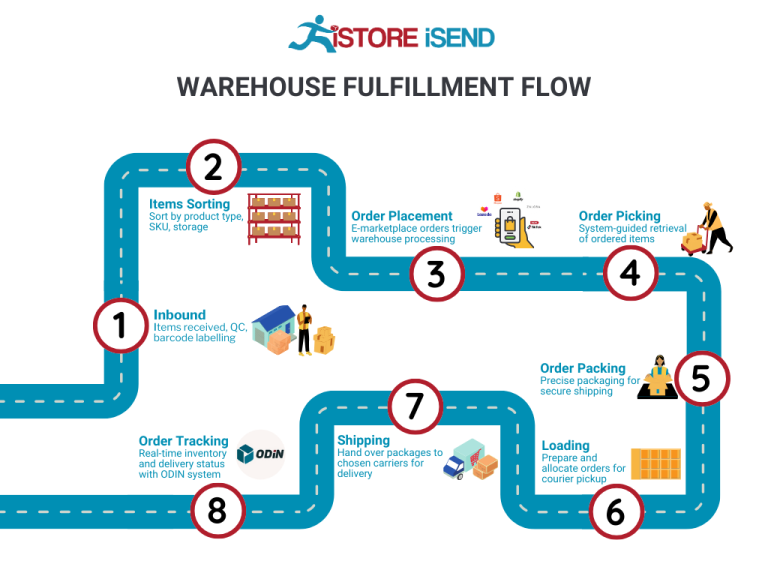
Importance: Order picking is a critical phase in the fulfillment process, as it directly affects the accuracy and speed of order completion. Inefficiencies or errors during picking can lead to customer dissatisfaction and increased return rates.
Key Term: Pick List – A document that specifies which items to retrieve for fulfilling customer orders, including details such as item location and quantity.
4. Order Packing
After the items have been picked, they are taken to the packing area. During this stage, orders are carefully packed into boxes or containers, with attention to ensuring that items are secure and protected for transit. Packing also involves labeling each package with shipping information and often includes packing slips that detail the contents of the order.
Importance: Proper packing is essential for preventing damage during shipping and ensuring that the correct items reach customers. It also plays a role in maintaining a positive brand image, as well-packaged orders contribute to customer satisfaction and trust.
Key Term: Packing Slip – A document included in the package that lists the items contained within, serving as a receipt for the customer.
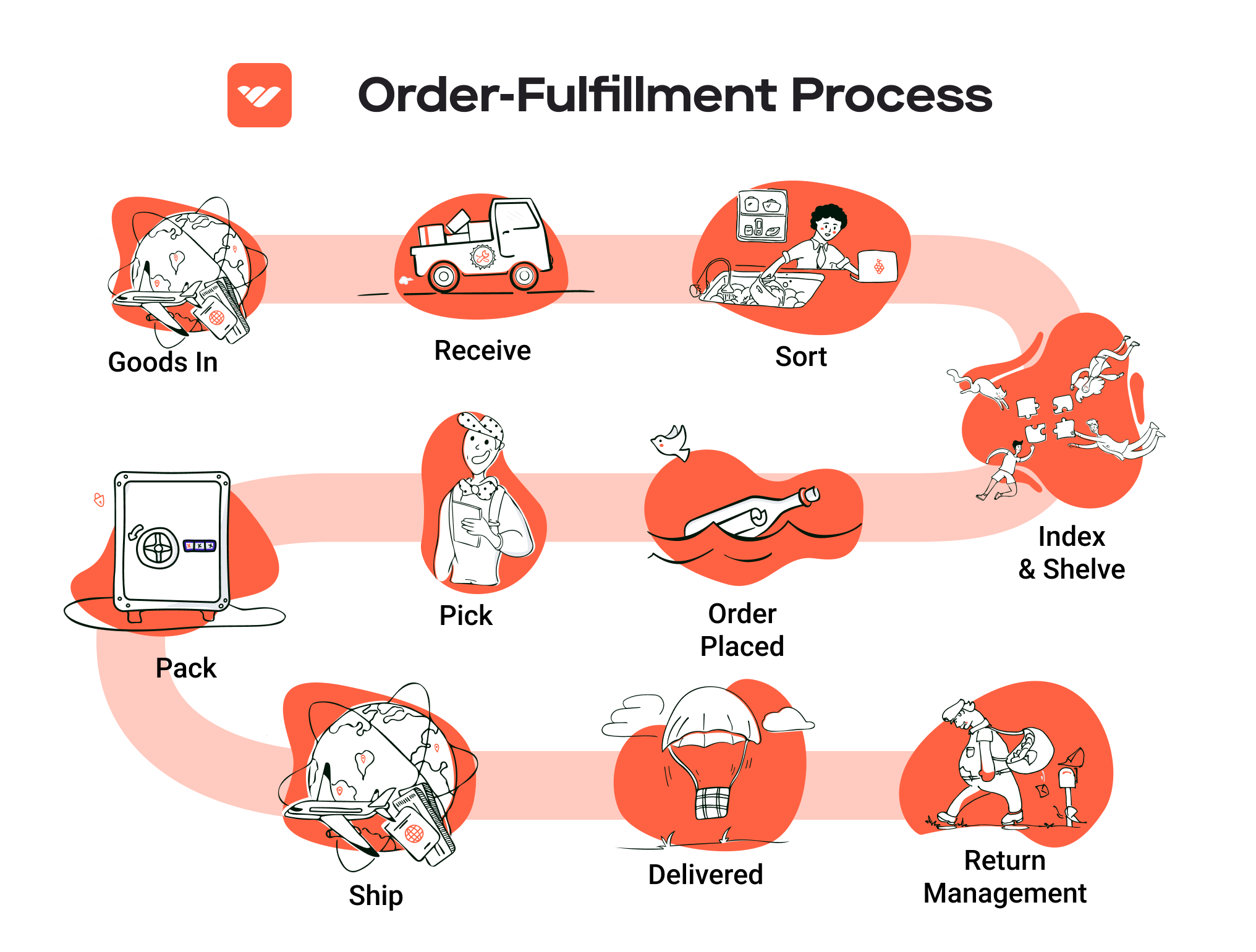
5. Shipping & Delivery
The final step in the order fulfillment process is shipping and delivery. Once packed, orders are staged for shipment, where they are loaded onto delivery vehicles for transportation to the customer. This step often involves coordination with carriers and logistics providers to ensure timely delivery.
Importance: The shipping and delivery phase is the last touchpoint between a business and its customers, making it vital for maintaining customer satisfaction. Efficient logistics can lead to faster delivery times and reduced shipping costs, both of which are critical for competing in today’s e-commerce landscape.
Key Term: Last-Mile Delivery – The final step of the delivery process, where the package is transported from a distribution center to the customer’s doorstep, often the most complex and costly part of the shipping process.
By mastering each of these five steps in the order fulfillment process, e-commerce businesses can enhance their operational efficiency, improve customer satisfaction, and ultimately scale their logistics to meet growing demand.
Comparing Fulfillment Models: In-House vs. 3PL vs. Dropshipping
Fulfillment Model Comparison
| Model | Who Handles Inventory | Best For (Business Stage) | Key Advantage | Key Disadvantage |
|---|---|---|---|---|
| In-House Fulfillment | Business Owner | Established businesses | Greater control over inventory and operations | High overhead costs and resource demands |
| Third-Party Logistics (3PL) | Third-Party Provider | Growing businesses | Scalability and reduced operational burden | Less control over inventory and potential service variability |
| Dropshipping | Supplier | Startups or small businesses | Low initial investment and minimal risk | Lower profit margins and reliance on suppliers’ inventory |
In-House Fulfillment
In-house fulfillment involves managing the entire logistics process internally, from inventory management to packing and shipping orders. This model is best suited for established businesses that have the resources and infrastructure to handle fulfillment efficiently. The primary advantage of in-house fulfillment is the level of control it offers over inventory and customer experience. Businesses can implement their own quality control measures, tailor packaging to their brand, and directly manage shipping times. However, this model requires significant investment in warehouse space, staffing, and technology, which can lead to high overhead costs. Additionally, as order volumes increase, businesses may struggle to scale operations without substantial investment in additional resources.
Third-Party Logistics (3PL)
Utilizing a third-party logistics provider (3PL) allows businesses to outsource their fulfillment operations to an external company. This model is particularly advantageous for growing businesses that may not have the capital or desire to manage logistics in-house. The key benefits of 3PL include scalability and reduced operational burdens, as these providers have the infrastructure and expertise to handle logistics efficiently. They typically manage warehousing, packing, shipping, and sometimes even customer service. However, the main drawback is the loss of control over inventory and the potential for service variability. Businesses must ensure they choose a reputable 3PL partner that aligns with their service standards and customer expectations. In regions like Fayetteville, where new fulfillment centers are emerging, partnering with a local 3PL can also provide faster shipping times to local customers.
Dropshipping
Dropshipping is a fulfillment model where the retailer does not keep goods in stock but instead transfers customer orders directly to a supplier, who then ships the products directly to the customer. This model is ideal for startups or small businesses that want to minimize risk and initial investment. The primary advantage of dropshipping is that it requires little upfront capital since there’s no need to purchase inventory in advance. This flexibility allows entrepreneurs to experiment with various products and markets without significant financial commitment. However, the key disadvantage is that dropshipping typically results in lower profit margins due to reliance on suppliers, who may have higher pricing. Additionally, businesses have less control over inventory levels, shipping times, and product quality, which can lead to customer dissatisfaction if not managed properly. For entrepreneurs in Fayetteville and similar areas, dropshipping can be a viable entry point into e-commerce, especially when combined with local marketing strategies to reach customers effectively.
Conclusion
Selecting the right fulfillment model is crucial for scaling your e-commerce business, particularly in a dynamic logistics environment like Fayetteville, where new facilities are enhancing distribution capabilities. Each model—whether in-house fulfillment, 3PL, or dropshipping—comes with its unique benefits and challenges. Understanding these differences will enable business owners, operations managers, and entrepreneurs to make informed decisions that align with their business goals, operational capabilities, and market demands.
A Deep Dive into Amazon FBA: Pros, Cons, and Who It’s For
Understanding Fulfillment by Amazon (FBA)
Fulfillment by Amazon (FBA) is a service offered by Amazon that allows e-commerce sellers to store their products in Amazon’s fulfillment centers. Amazon takes care of storage, packaging, shipping, and customer service for these products, enabling sellers to focus on scaling their businesses rather than the logistics of order fulfillment. This service has become increasingly popular among entrepreneurs and businesses looking to leverage Amazon’s extensive logistics network.
How FBA Works
-
Product Listing: Sellers create listings for their products on Amazon’s marketplace. This can be done through Amazon Seller Central, where they can manage their inventory and sales.
-
Inventory Shipment: Sellers ship their products directly to Amazon’s fulfillment centers. Upon arrival, Amazon takes over the responsibility of managing the inventory.
-
Order Processing: When a customer places an order, Amazon picks, packs, and ships the product on behalf of the seller. This process is streamlined to ensure quick delivery, often within two days for Prime members.
-
Customer Service and Returns: Amazon handles all customer service inquiries related to the FBA products, including returns and refunds. This allows sellers to benefit from Amazon’s established customer service reputation.
-
Payment and Fees: After the sale, Amazon deducts applicable fees from the sale price before disbursing the funds to the seller. These fees include storage fees for holding inventory and fulfillment fees for processing orders.
Pros of Using FBA
1. Prime Eligibility
One of the most significant advantages of using FBA is that products become eligible for Amazon Prime. This status not only enhances the visibility of listings but also attracts a vast customer base that values fast shipping and reliable service.
2. Customer Trust
Amazon is a trusted brand worldwide. By utilizing FBA, sellers can leverage Amazon’s reputation, giving customers more confidence in purchasing products. The backing of Amazon’s customer service also means that buyers are more likely to complete their purchases, knowing they will receive support if needed.
3. Multi-Channel Fulfillment
FBA is not limited to sales on Amazon. Sellers can use FBA to fulfill orders from their own websites or other sales channels. This flexibility can simplify logistics and streamline operations for businesses that sell across multiple platforms.
4. Scalability
FBA allows sellers to scale their businesses without the need for additional warehousing or logistics infrastructure. As demand for products grows, sellers can easily send more inventory to Amazon without worrying about the complexities of managing fulfillment.
5. Simplified Logistics
With Amazon handling storage, packing, and shipping, sellers can focus on other essential aspects of their business, such as marketing and product development. This frees up time and resources, allowing for greater efficiency.
Cons of Using FBA
1. High Fees
FBA can be costly, with various fees associated with storage and fulfillment. Sellers must pay for storage space based on the volume of inventory held at Amazon’s facilities, and fulfillment fees are charged per unit sold. For low-margin products, these costs can significantly cut into profits.
2. Strict Inventory Management Rules
Amazon has stringent policies regarding inventory management. Sellers must comply with specific guidelines related to labeling, packaging, and storage. Failure to adhere to these rules can result in additional fees or even account suspension.
3. Commingling Risks
FBA involves a practice called commingling, where products from different sellers are stored together. This can pose risks, especially if a customer receives a damaged or defective product that is not from the seller’s inventory. Such situations can lead to negative reviews and impact a seller’s reputation.
4. Limited Control Over Fulfillment
While FBA simplifies logistics, it also means sellers have less control over the fulfillment process. Any issues related to shipping delays or inventory mismanagement fall under Amazon’s jurisdiction, which can be frustrating for sellers who prefer to manage these aspects directly.
5. Inventory Restrictions
Certain products may be restricted from FBA, or sellers might face limitations on how much inventory they can send to fulfillment centers. These restrictions can hinder growth opportunities for sellers looking to expand their product offerings.
Who is FBA Best For?
Fulfillment by Amazon is particularly well-suited for:
-
Small to Medium-Sized Businesses: Companies looking to grow their online presence without investing heavily in logistics infrastructure will find FBA beneficial. It allows them to compete with larger brands while minimizing operational overhead.
-
Sellers with High Turnover Products: Businesses that sell products with high demand and quick turnover can maximize their profitability through FBA, as fast shipping and customer trust can lead to increased sales.
-
Brands Seeking Expansion: For brands wanting to expand their reach beyond their website or local market, FBA offers a way to tap into Amazon’s vast customer base.
-
E-commerce Entrepreneurs: New sellers who may not have experience in logistics and fulfillment can leverage FBA to get their products into the market quickly and efficiently.
In conclusion, while Fulfillment by Amazon presents various advantages that can facilitate growth and customer satisfaction, it also comes with challenges that sellers must navigate. Understanding these factors is crucial for e-commerce business owners and entrepreneurs looking to optimize their operations and scale effectively.
Core Services Offered by Fulfillment Centers
Inventory Management & Warehousing
Inventory management and warehousing are foundational services provided by fulfillment centers. These facilities are equipped to store a wide range of products, from bulky items like furniture to smaller consumer goods, in an organized manner. A fulfillment center like the newly opened Amazon facility in Fayetteville, NC, utilizes advanced inventory management systems to track stock levels, manage product locations, and ensure timely replenishment.
Benefits:
1. Space Optimization: By outsourcing warehousing to a fulfillment center, e-commerce businesses can reduce overhead costs associated with maintaining their own warehouse space.
2. Real-Time Inventory Tracking: Fulfillment centers use sophisticated software that provides real-time data on inventory levels, enabling businesses to make informed decisions about restocking and product availability.
3. Scalability: As a business grows, fulfillment centers can quickly adapt to increased inventory needs without the need for significant capital investment in additional storage space.
Pick and Pack Services
Pick and pack services are critical for e-commerce operations, as they involve selecting items from storage (picking) and preparing them for shipment (packing). Fulfillment centers streamline this process using efficient systems and trained personnel to ensure accuracy and speed. The Fayetteville Amazon facility, for example, is designed to handle high volumes of orders, ensuring quick turnaround times for shipping.
Benefits:
1. Speed and Efficiency: Fulfillment centers can process orders faster than many in-house operations due to their expertise and specialized equipment, helping businesses meet customer expectations for fast shipping.
2. Accuracy: With trained staff and automated systems, the risk of errors in order fulfillment is significantly reduced, which enhances customer satisfaction and minimizes return rates.
3. Cost Savings: By outsourcing pick and pack services, e-commerce businesses can save on labor costs and reduce the complexity of their logistics operations.
Kitting and Assembly
Kitting and assembly services involve the process of combining multiple products into a single package or preparing items for sale. This may include assembling components into a finished product or creating bundles that offer added value to customers. Fulfillment centers often have the capability to handle these tasks, allowing businesses to offer customized products without the need for additional labor.
Benefits:
1. Customization: Kitting allows businesses to create unique product offerings that can attract customers and differentiate them from competitors. This can be particularly beneficial for seasonal promotions or special events.
2. Streamlined Operations: By outsourcing kitting and assembly to a fulfillment center, businesses can focus on core activities such as marketing and sales, while ensuring that product preparation is handled by professionals.
3. Reduced Lead Times: With kitting services available, businesses can quickly respond to market demands and customer preferences, enhancing agility in their operations.
Returns Management (Reverse Logistics)
Returns management, also known as reverse logistics, is a crucial service offered by fulfillment centers. This process involves handling returned items efficiently, including processing returns, restocking inventory, and managing exchanges or refunds. Given the increasing return rates in e-commerce, having a reliable returns management system is essential for customer satisfaction and operational efficiency.
Benefits:
1. Enhanced Customer Experience: A streamlined returns process can significantly improve customer satisfaction, as it makes returning items easy and hassle-free. This can lead to repeat purchases and positive reviews, which are vital for business growth.
2. Cost Efficiency: Fulfillment centers can manage returns more effectively than many businesses can in-house, potentially reducing costs associated with reverse logistics. Efficient processing also minimizes the time that returned products spend out of stock.
3. Data Insights: Returns management can provide valuable data regarding customer preferences and product quality. This information can be used to make informed decisions about inventory management, product development, and marketing strategies.
In conclusion, partnering with a fulfillment center like the Amazon facility in Fayetteville, NC, can provide e-commerce businesses with a range of essential services that enhance operational efficiency, improve customer satisfaction, and support scalability. By leveraging these core services, businesses can focus on growth and innovation while ensuring that their logistics operations are managed effectively.
How to Choose a Fulfillment Partner: A 6-Point Checklist
Location & Warehouse Network
Why It Matters:
The geographical location of your fulfillment partner can significantly impact shipping times, costs, and overall customer satisfaction. A partner with a well-distributed warehouse network can facilitate faster deliveries, especially for e-commerce businesses that rely on quick turnaround times.
Key Questions to Ask:
1. Where are your warehouses located, and how do they align with our target customer demographics?
2. How does your location affect shipping costs and delivery times to our primary customer base?
3. Do you have plans for expanding your warehouse network in the future?
Technology & Integrations
Why It Matters:
In today’s digital age, the technology used by your fulfillment partner is crucial for seamless operations. Advanced systems can provide real-time inventory tracking, order management, and integration with various e-commerce platforms, which can enhance your operational efficiency.
Key Questions to Ask:
1. What technology platforms do you use for inventory management and order processing?
2. Can your systems integrate with our existing e-commerce platforms (e.g., Shopify, Amazon, WooCommerce)?
3. Do you offer real-time tracking for orders, and how can we access that information?
Specializations (e.g., Cold Storage, Oversized Items)
Why It Matters:
Different businesses have different needs based on their product types. If you sell specialized products, such as perishable goods or oversized items, it’s essential to partner with a fulfillment provider that has the necessary facilities and expertise.
Key Questions to Ask:
1. What specific types of products do you specialize in handling?
2. Do you have the capability for cold storage or handling oversized items?
3. Can you accommodate seasonal fluctuations in inventory and demand for specialized products?
Scalability & Capacity
Why It Matters:
As your business grows, your fulfillment needs will evolve. A partner that can scale with your operations will save you from the headaches of switching providers mid-growth. This includes having the capacity to handle increased order volumes and the flexibility to adapt to your changing business model.
Key Questions to Ask:
1. What is your current capacity, and how quickly can you scale up if our order volume increases?
2. Have you successfully managed scaling for other clients? Can you provide examples?
3. What contingency plans do you have in place for peak seasons or unexpected spikes in demand?
Pricing and Contracts
Why It Matters:
Understanding the pricing structure and contract terms is crucial to ensure that you’re making a financially sound decision. Hidden fees can quickly erode your margins, so clarity in pricing is essential.
Key Questions to Ask:
1. Can you provide a detailed breakdown of your pricing structure, including any potential hidden fees?
2. What are the terms of your contracts, and do they allow for flexibility if our needs change?
3. Do you offer volume discounts or incentives for long-term partnerships?
Customer Support & Reviews
Why It Matters:
Effective customer support can make or break your experience with a fulfillment partner. Quick responses to issues can prevent disruptions in your supply chain, while positive reviews from other clients can give you confidence in their reliability.
Key Questions to Ask:
1. What customer support channels do you offer (e.g., phone, email, live chat), and what are your response times?
2. Can you provide references or case studies from other clients in our industry?
3. How do you handle customer complaints, and what is your process for resolving issues?
Conclusion
Choosing the right fulfillment partner is a critical decision that can influence your business’s efficiency, customer satisfaction, and bottom line. By using this checklist, e-commerce business owners, operations managers, and entrepreneurs can ensure they are selecting a partner that aligns with their operational needs and growth ambitions. Taking the time to ask the right questions and thoroughly assess potential partners will lead to a more strategic and successful fulfillment strategy.
Understanding Fulfillment Pricing: A Breakdown of Common Fees
Initial Setup Fees
When partnering with a fulfillment center, many providers charge an initial setup fee to cover the costs associated with integrating your business into their system. This fee typically includes the creation of your account, system configuration, and any necessary training on using their platform. The setup fee can range from a few hundred to several thousand dollars, depending on the complexity of your operations and the services required.
To calculate this fee, fulfillment centers may assess factors such as the number of SKUs (stock-keeping units) you have, the volume of orders you expect, and any unique requirements for your inventory management. It’s crucial to clarify what services are included in the setup fee to avoid unexpected charges later on.
Receiving Fees
Receiving fees are charged when your inventory arrives at the fulfillment center. This fee covers the labor and equipment needed to unload, inspect, and store your products. The fee is often calculated based on the volume of goods received, typically measured in weight or the number of pallets.
For example, a fulfillment center may charge a flat rate per pallet or a per-unit fee for items received. Some centers may also charge additional fees for special handling requirements, such as inspecting or repackaging items. It’s advisable to discuss with your fulfillment provider how they calculate receiving fees and if there are any minimum fees or surcharges for small shipments.
Storage Fees (per pallet/bin)
Storage fees are charged for holding your inventory within the fulfillment center. These fees are generally calculated on a monthly basis, either per pallet or per cubic foot, depending on how the facility organizes its space. The rate can vary based on the time of year, as many fulfillment centers implement tiered pricing based on peak seasons (e.g., holidays).
To manage storage costs effectively, consider how much inventory you need to keep on hand. Keeping a lean inventory can help minimize storage fees, but be careful not to run out of stock, as this could impact your sales. Additionally, inquire about policies regarding long-term storage fees, which may apply if items remain in the warehouse for an extended period.
Pick & Pack Fees (per item/order)
Pick and pack fees are incurred each time an order is processed. This fee covers the labor involved in picking the items from storage, packing them into boxes, and preparing them for shipment. The fee structure can be based on the number of items in an order or a flat rate per order.
For example, a fulfillment center may charge a pick fee for each item selected and a separate packing fee for each order processed. Understanding the pick and pack fee structure is essential for pricing your products competitively. If your products have high variability in order size, it may be beneficial to negotiate a more favorable rate based on your specific order patterns.
Shipping Fees
Shipping fees are one of the most significant costs associated with fulfillment services. These fees cover the transportation of your products from the fulfillment center to the end customer. Shipping costs can vary widely based on several factors, including the shipping carrier, destination, package weight, and shipping speed (standard, expedited, etc.).
Most fulfillment centers offer discounted shipping rates due to their volume shipping agreements with carriers. It’s essential to understand how shipping fees are calculated and whether they are passed directly to you or if the fulfillment center absorbs some of these costs. Additionally, explore options for flat-rate shipping or negotiated rates with carriers to reduce shipping expenses further.
Tips for Getting an Accurate Quote
-
Provide Detailed Information: When seeking quotes from fulfillment centers, provide comprehensive details about your business, including the number of SKUs, average order volume, and specific fulfillment needs. This information helps providers give you a tailored quote.
-
Ask About Hidden Fees: Be sure to inquire about any additional charges that may not be included in the initial quote, such as long-term storage fees, special handling fees, or costs associated with returns.
-
Request a Breakdown of Costs: Ask for a detailed breakdown of all fees involved in the fulfillment process. This clarity helps you understand your total costs and aids in accurate budgeting.
-
Compare Multiple Providers: Don’t settle for the first quote. Compare offers from multiple fulfillment centers to ensure you’re getting competitive pricing and services that meet your needs.
-
Negotiate Terms: Many fulfillment centers are open to negotiation, especially if you can demonstrate a potential for significant order volume. Discussing terms can lead to better rates and service agreements.
By understanding these common fulfillment pricing models and following these tips, you can make informed decisions that support the growth of your e-commerce business while keeping costs manageable.
Frequently Asked Questions (FAQs) about Fulfillment
FAQs about Amazon Fulfillment Center Fayetteville, NC
-
What is the Amazon Fulfillment Center in Fayetteville, NC?
The Amazon Fulfillment Center in Fayetteville, located at 6309 Bragg Blvd, is a large distribution facility spanning approximately 1.3 million square feet. It serves as a hub for receiving, sorting, and shipping inventory, particularly bulky and non-sortable items such as furniture and equipment, to various Amazon cross-docks and fulfillment centers. -
What types of jobs are available at the Fayetteville fulfillment center?
The facility is expected to create over 1,000 full-time and part-time jobs across various roles, including warehouse associates, management positions, and operational support staff. Job postings are updated weekly, and the starting wage is $17 per hour, along with benefits and opportunities for career advancement. -
How does the fulfillment process work at the Fayetteville facility?
The fulfillment process begins with the receipt of inventory at the center. Items are sorted based on their destination and subsequently packed for shipment to cross-dock facilities or directly to customers. This process enhances efficiency and speed in delivering products to the end consumer. -
What is the difference between a warehouse and a fulfillment center?
A warehouse is primarily used for storing goods, whereas a fulfillment center is designed to handle the entire process of order fulfillment, including receiving inventory, processing orders, packing, and shipping. Fulfillment centers focus on quick and accurate delivery to customers, which is essential for e-commerce businesses. -
What are the benefits of using Amazon’s fulfillment services?
Utilizing Amazon’s fulfillment services allows businesses to leverage Amazon’s extensive logistics network, providing faster shipping options, access to Amazon Prime customers, and the ability to scale operations without investing in warehousing infrastructure. Additionally, it enhances customer satisfaction through reliable delivery services. -
What is a 3PL (Third-Party Logistics)?
A 3PL is a company that provides outsourced logistics services, which can include transportation, warehousing, and fulfillment. Businesses often partner with 3PLs to streamline their supply chain operations and focus on their core competencies while leaving logistics management to experts. -
How much do fulfillment services cost?
The cost of fulfillment services varies widely based on factors such as the volume of orders, types of products, storage needs, and additional services like packaging or returns management. Typically, businesses can expect to pay for storage space, picking and packing fees, and shipping costs. It’s advisable to request quotes from multiple providers to find a service that fits your budget. -
What are the operational hours of the Fayetteville fulfillment center?
The operational hours of the fulfillment center may vary, but typically, Amazon facilities operate 24/7 to accommodate the demands of e-commerce. Specific shifts and hours can be confirmed by visiting the Amazon job portal or contacting the facility directly. -
How does the Fayetteville fulfillment center impact the local economy?
The opening of the Amazon Fulfillment Center is expected to significantly boost the local economy by creating job opportunities, increasing average wages, and reducing unemployment rates in the Fayetteville area. The facility also attracts ancillary businesses and services that support its operations. -
How can businesses partner with the Fayetteville fulfillment center for their logistics needs?
Businesses interested in partnering with Amazon for fulfillment services can begin by exploring Amazon’s Fulfillment by Amazon (FBA) program. This program allows sellers to store their products in Amazon’s fulfillment centers, where Amazon takes care of storage, packaging, and shipping. Detailed information can be found on Amazon’s Seller Central platform.
Conclusion: Is Outsourcing Fulfillment the Right Move for Your Business?
Evaluating the Benefits of Outsourcing Fulfillment
Outsourcing fulfillment can be a transformative decision for e-commerce businesses looking to scale. By leveraging a fulfillment service, companies can save valuable time that would otherwise be spent on logistics management, allowing them to focus on core business activities such as marketing and customer engagement. This streamlined approach not only enhances operational efficiency but also leads to improved customer satisfaction through faster shipping times.
Scalability is another critical advantage. As your sales volume increases, a fulfillment partner can easily adapt to your changing needs without the burden of managing additional warehousing or staffing. This flexibility enables businesses to respond quickly to market demands, seasonal fluctuations, or unexpected spikes in order volume, ensuring that growth opportunities are not missed due to logistical constraints.
Moreover, partnering with a fulfillment service brings expertise that can significantly enhance your operations. Established fulfillment centers, like the new Amazon facility in Fayetteville, NC, utilize advanced technology and processes honed through years of experience. This expertise can lead to better inventory management, reduced shipping costs, and enhanced accuracy in order fulfillment.
However, it is crucial to choose the right fulfillment partner to align with your business goals. A thorough assessment of potential partners—considering their capabilities, technology, and customer service—is essential for sustainable growth.
Take Action Now
As you contemplate whether outsourcing fulfillment is the right move for your business, consider conducting an audit of your current shipping processes. Evaluate how much time and resources are spent on logistics and whether these efforts align with your growth objectives. This strategic assessment will provide clarity on whether a fulfillment partner could be your next step toward scaling your operations effectively and efficiently.
Important Disclaimer
⚠️ Important Disclaimer
The information in this guide is for educational purposes. Fulfillment services, pricing, and platform features change frequently. Always conduct your own due diligence and consult with providers directly before making business decisions.
